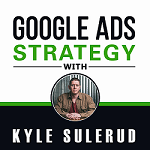The core purpose of YouTube Ads is to place a video ad in front of people. And with any luck (or knowledge of YouTube Ads 😉), the right people will see your ad. There are multiple ways to achieve this goal, and they all fall into two main categories:
- Content Targeting – Putting an ad in front of specific types of content. It doesn’t matter who the person is because you’re targeting the content.
- Audience Targeting – Putting an ad in front of specific types of people. It doesn’t matter what the people are watching because you are specifically targeting them, not the content.
Let’s break these down a little more.
Content Targeting
There are a few different ways to tell the YouTube Ads system where you want them to run your ads.
Channel & Video Placements
With placement targeting, you can target certain YouTube channels or videos if they are enabled for advertising.
When targeting specific channels or videos, your targeting can be pretty limited, but you should still take advantage of these types of targeting as much as possible. You’ll want to do extensive research to find relevant channels and videos (as many as possible) that you can.
Topic Targeting and Video Lineups
Topic Targeting and Video Lineups are types of targeting that will allow you to get a little broader but still be targeting content. These options both utilize lists built by Google – videos are defined by certain topics or lineup categories and you target the entire list of videos.
A major limitation is that Google might not have a topic or video lineup that is relevant to the customers you are targeting. If this is the case, you are out of luck for now. But if you do find a topic or video lineup category that matches your target customer, this can be extremely powerful as it provides the opportunity to get in front of a lot of content at once.
Websites and Mobile Apps
Websites and apps can also actually be used for content targeting. This doesn’t really make sense, right? If you’re thinking of running YouTube Ads, wouldn’t they be run ON YouTube? Well, if you enable video partners on the display network, there are actually some websites and mobile apps that will play your YouTube Ads.
I usually do recommend turning off the video partner network, but if there is a certain website or mobile app that your customers frequently utilize, then this may be a potential source of good traffic through your campaign.
If you do choose to utilize the video partner network, be sure that the majority of people using the app or the website are your target customers. I stress this because, in general, the video partner network does not work very well, so you don’t want to waste time doing this if only a small percentage of the users would be ideal customers.
Keyword Targeting
Keyword Targeting allows you to create a list of keywords and add them to your YouTube Ads campaign. You can add as many keywords to the list as you want and then YouTube will put your ad on videos related to those words. BUT… your ad will also show to audiences who have shown interest in those keywords – even if they aren’t watching content related to your selected keywords. This isn’t necessarily a bad thing as audience targeting can work very well, but you need to be aware of it.
With that in mind, let’s move on to audience targeting…
Audience Targeting
With audience targeting, you are targeting the people – their characteristics, or things that they are interested in. Let’s break these down.
Keyword Targeting
Keywords allow you to target content related to those keywords along with people interested in the keywords, regardless of the content they are watching. This may result in very broad targeting because Google’s reach can extend so far that it almost becomes ineffective. On the other hand, it can also be one of the best opportunities to scale a campaign. The key is to find keywords that work well and invest in them, resulting in reaching more target customers.
In-Market Audience Targeting
Google creates lists of people based on what they are researching, actively planning, or looking to buy right now. These pre-built in-market lists are excellent for if your target customer matches one of them. But, if there is no list that your target customer would be on, just skip using this method as it will do you no good. You don’t need to use every type of targeting just because it is available!
Affinity Audience Targeting
Essentially, this type of targeting identifies people based on their interests or habits. It varies from in-market targeting because while in-market covers a shorter interest period, affinity audiences are based on more long-term interests.
You can also create custom intent and custom affinity audiences. With these audiences, you can actually build them by giving Google a list of keywords or websites and the system will search for people who have been searching for the keywords or browsing the websites (in reality, these lists will also include people similar to the people who are browsing/searching, so custom audiences aren’t as magical as they may sound).
Audiences can also be more than just what people are interested in – it’s who they are. Objective aspects that define a person such as age, gender, and marital status come into play here. This allows you to narrow your focus by layering items such as age over another type of audience, which can really help you reach your ideal customers.
